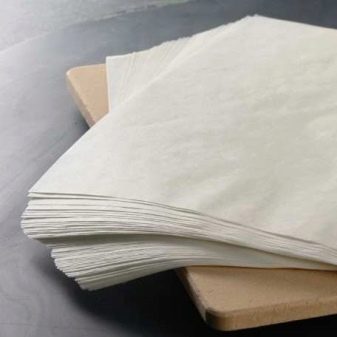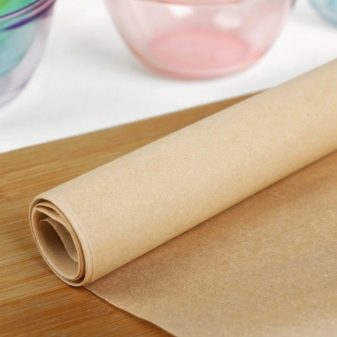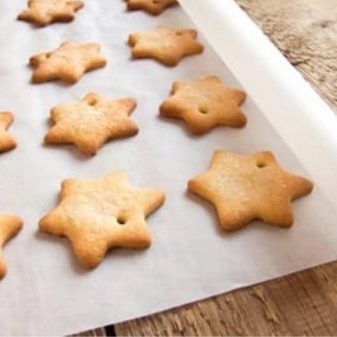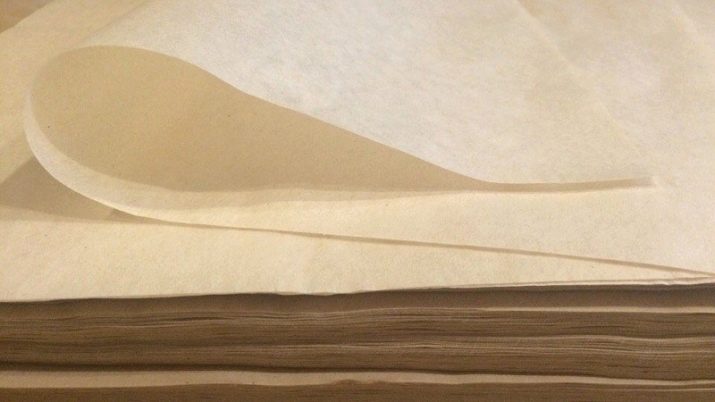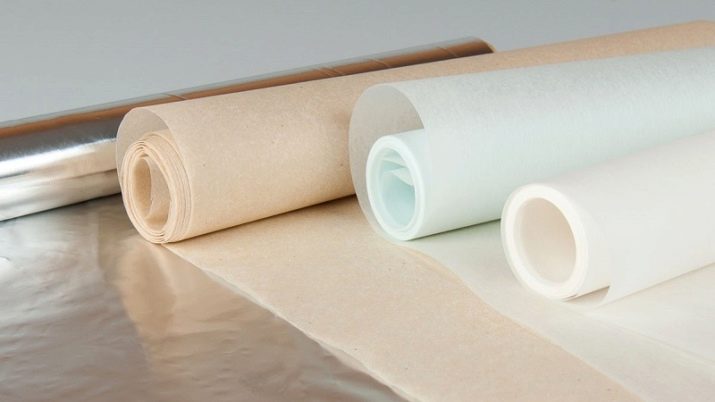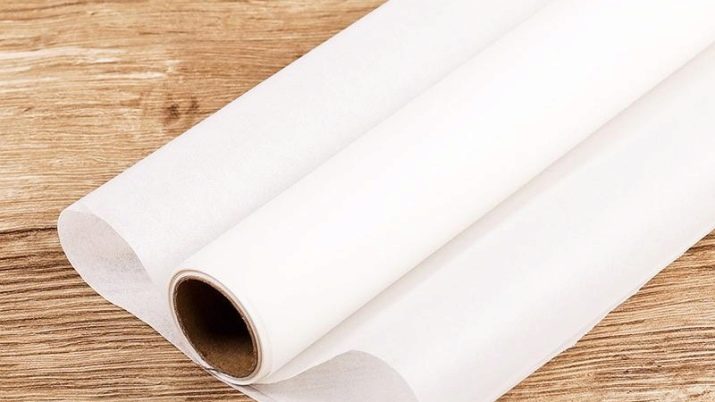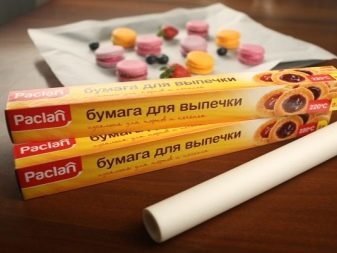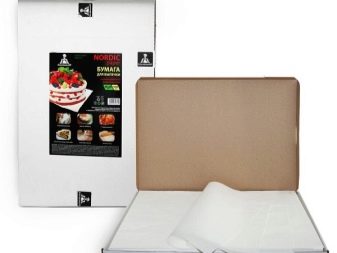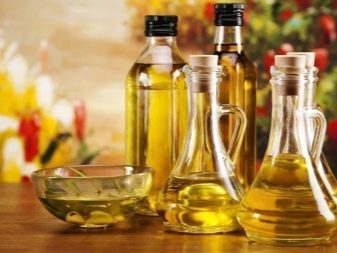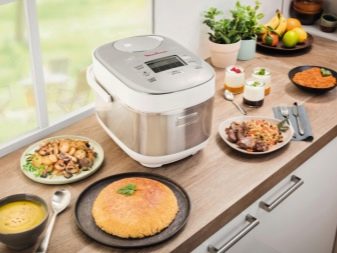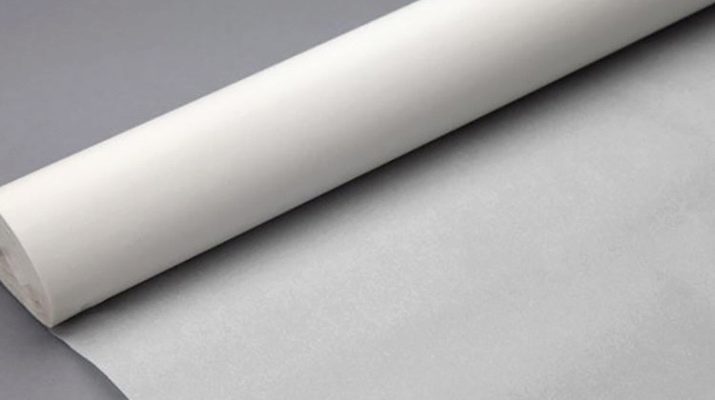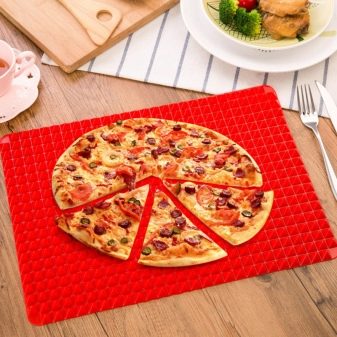Each hostess must have in their arsenal paper for baking. It is simply necessary for the preparation of hot dishes from dough, baked meat and confectionery.
Features
Parchment for baking is needed in order to preserve the shape of the baked dish by reducing the sticking of the product to the baking sheet. Moreover, this option is relevant not only when creating hot pastries, but also for cold sweet products, for example, cheesecakes and tiramisu. The use of baking paper significantly reduces labor costs for washing dishes and embossed forms, therefore, in stores it can be purchased not only in the form of flat leaves, but also as a mold for cupcakes, as well as muffins.
Baking paper is truly indispensable for packaging cooked food, as well as medicines and any sterile items. Thereby it is possible to prevent spoilage, contamination and drying of the products. Baking paper has long been adopted by catering enterprises, in particular, restaurants that prepare to "take away".
Due to its exceptional water and grease resistance, baking paper allows you to keep cooked food hot for as long as possible. When you roll the dough between several layers of paper, you can get superfine cakes. They are transferred to the oven directly on the piece, thereby eliminating the risk of breaking them along the way.
You can make very good food corners for cream, condensed milk, as well as melted chocolate from paper for baking - by folding them like a paper bag, you can quickly and easily decorate homemade cakes with decorative roses, curls or make an interesting inscription.
Paper is often used to make stencils for confectionary decorations — to do this, simply place the sheet on the pattern you like, cut a pencil and cut it, then put the template on a cake or pie and sprinkle with grated chocolate, cocoa or sweet powder. Some housewives use multicolored coconut chips.
If you do not have dishes for a microwave, you can heat the dish directly on baking paper - in this case, all its taste properties are fully preserved.
Kinds
Unbleached food parchment
This is a better-quality thin paper that is popular for storing food and cooking pies and other hot dishes. The basis for its manufacture is fat milling cellulose, because products are characterized by exceptional environmental friendliness and safety for humans. However, it should be borne in mind that unbleached parchment holds only fat, and passes moisture - this significantly limits the scope of its use.
In addition, the recommended heating temperature when using this material should not exceed 170 degrees.
Food parchment
This is a classic baking paper - fairly durable, smooth to the touch. As a rule, it is made in brown color. The basis for the parchment is a porous filter base, treated with 50% sulfuric acid and forced-dried. This method of production gives the paper increased water and grease resistance, and these properties remain unchanged when heated to 230 degrees.
This material is biologically inert, it allows air to pass through, making the product able to “breathe” without absorbing any excess odors.The strength factor of traditional food parchment is twice as high as the corresponding parameter for ordinary baking paper, which makes it possible to use the product for packaging products such as margarine, butter, spreads, sweet cheese and dessert curds.
Silicone Coated Parchment
This is one of the most popular types of baking paper in our time. Such parchment easily lags behind the finished products of all types, but it does not need grease. The coefficient of heat resistance significantly exceeds the parameters of all other types of baking paper and can withstand continuous heating up to 300 degrees. It is important that such paper can be used many times.
Parchment with siliconized coating allows you to transfer layers of puff pastry before freezing, as well as store cheese and sausage cuts - in this case, the product retains its freshness longer than during normal storage.
A special kind of silicone coated paper is considered to be a special silicone paper - it is distinguished by a more dense coating, which means it can be applied more times.
Tips for choosing
The relevance of tracing paper, which was often used instead of baking parchment by our mothers and grandmothers, is small today - its use is significantly limited. Food parchment paper is most popular among housewives. ABOUTon is good because does not require additional use of oil and at the same time perfectly preserves the shape of the baked product.
Experienced pastry chefs prefer silicone coated paper, as it is easy to use, it is used for all types of baking, it easily withstands the effects of temperatures up to 300 degrees for a long time.
In the household and online stores, baking paper is sold in a wide variety. Several dozen enterprises are engaged in its manufacturing, but the most sought-after products are considered to be brands. Paclan and Nordic.
Paclan parchment is a silicone-coated paper, thanks to which it perfectly repeats the surface and contours of the pan, does not crumble, does not stick to the dough, and can be used repeatedly. Although this parchment is rather thin, it is still very durable and can withstand the highest temperatures.
Nordic products have similar characteristics. When purchasing paper of this brand, you can always be sure that you can easily prepare the most real confectionery masterpieces without the slightest danger that they are deformed or stick to the baking sheet.
How to use?
Like ordinary foil, baking paper has two sides. On a baking sheet of paper laid out necessarily so that it is located matte side down. Silicone parchment oil is not necessary to lubricate. Regarding other types of baking paper, you should read the information on the package. As a rule, they write there whether there is impregnation or not. If not, then before placing in the oven should be greased sheet with vegetable oil. Such processing will also not be superfluous if you plan to bake meat or fish.
Baking parchment can be used in a multicooker. This modern gadget is available in almost every home - the hostess in them cook, fry and bake a variety of products. Most often, the bottom and walls of the multicooker are spread with food parchment. Firstly, it will allow you to quickly and easily clean the bowl, and secondly, the dish turns out to be more juicy and fragrant.
Good frying pans with a non-stick Teflon coating are usually quite expensive, and frying meat products or fish on a large amount of oil is not at all beneficial for the body, so women often wonder about the possibility of using baking paper for baking when cooking such dishes. This method is equally effective when frying in a skillet, and when baking in the oven.In the first case, it is better to additionally lubricate the surface with vegetable oil, and in the second it will be quite enough already existing impregnation.
Not always the relationship of hostesses with parchment for baking develop ideally. Sometimes dough, fish, meat and meringue, despite expectations, still stick to parchment paper. The reason for this can only be in its incorrect use - either you took the sheets without impregnation, or put it down with the glossy side down. But if the incident has occurred and the parchment has already stuck to the dough, then it will be possible to remove it only from the cooled product - it is impossible to peel the paper off the hot baking.
What can replace the paper?
If you are constantly preparing pastries, then situations where the parchment ends at the most inappropriate moment are not excluded. An alternative to it may be drawing tracing paper, which can always be purchased at any office supply store.
Previously, tracing paper was widely used in cooking. Of all the varieties of paper used for baking, it is considered the most subtle and cost-effective material, and therefore has many disadvantages.
- Tracing paper before use should always be oiled, and on both sides. If this is not done, it will simply stick to the dish during cooking.
- Under the influence of elevated temperatures and with a long stay in the oven, the tracing-paper darkens, becomes very brittle, and can even crumble into small pieces, which then cannot be separated from the dough.
- Tracing paper in contact with moisture quickly soaks, so you can not use it to prepare dishes with juicy filling, for the same reason it can be taken only when working with sandy or yeast dough.
Also alternative to baking paper can be such materials.
- Foil - it should be put on the baking sheet with the glossy side up, while the upper side must be smeared with a thin layer of vegetable oil (when baking meat and fish, this is not necessary).
- Teflon paper - used for roasting in a frying pan and roasting in the oven. When using these sheets, you can not be afraid that your products will stick in the cooking process.
- Siliconized paper or pad - It is an ideal material for baking. Such a rug is much more dense than paper, because the products on it do not stick, and baking turns appetizing and ruddy.
If you don’t have one of the above, you can use very ordinary copier paper, but it should be oiled on both sides beforehand.
Sometimes every housewife has situations when they are still forced to serve pies and pastries with pieces of parchment stuck to her. In this regard, many people have a question - what will happen if it is not completely cleaned out and households accidentally swallow a small piece.
We hasten to reassure you - baking parchment is made from cellulose and fiber. Penetrating into the stomach of a person, it swells slightly, but at the same time it is well absorbed and digested, therefore no harm will come from an eaten piece for a person.
In the next video, two life hacks with baking paper are waiting for you.

